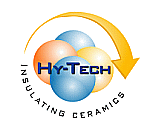Insulation "R" values
Are they the Total answer to insulation?
Heat naturally flows from warm areas to cooler areas, regardless
of direction.
In winter, heat flows from the inside of a building to the outside and in the summer high heat from roofs and walls travels from outside to inside.
This flow of heat can never be stopped completely, but the rate at which it flows can be reduced by using materials which have a high resistance to heat flow
( R value= resistance)
Heat is transferred in three distinct ways, any or all of which may be occurring at any given time!
Conduction:
Conduction is the transfer of heat through a solid object. When one part of an object is heated, the molecules within it begin to move faster and more vigorously, when these molecules hit other molecules within the object they cause heat to be transferred through the entire object. The handle on a cast iron skillet gets hot as heat is transferred from the bottom by means of conduction.
Convection :
Convection is the transfer of heat by the movement of a fluid (water,air, etc.) Hold your hand above the stove and you feel the heat as the hot air rises by means of Conduction. Inside of a wall air removes heat from a hot exterior wall, then circulates to the colder interior wall where it loses the heat.
Radiation: This is a direct transfer of heat from one object to another, without heating the air in between, the same process in which the Earth receives heat from the Sun or a wood stove supplies heat to its surroundings.
Obviously an important step in the creation of an energy efficient house or building is to control heat loss or gain, which accounts for 75% of the total energy loss of a home.
As was previously stated, heat will flow in any direction where a temperature difference occurs. Therefore all areas which separate the interior of a house or building from the outside or which separate heated spaces from unheated (or air conditioned) spaces need to have a high resistance to heat flow, in other words, they should be insulated!
How does insulation work?
Insulation is any material that slows the rate of heat flow from a warm area to a cooler one. The more the rate is slowed, the better the insulative qualities of the material. Its ability to resist heat flow is measured as an R or RSI (metric) value, the higher the R - value, the more the material will resist the flow of heat.
In order to be effective, insulation materials must be able to reduce the transfer of heat by the three ways we just discussed, conduction, convection and radiation
Choosing an insulation
The R - value is not the only consideration when choosing insulation yet it is the first thing most consumers ask, "What is the R value"
Conventional mass insulation materials like fiberglass, cellulose, rock wool and styrofoam, no matter how thick, have almost no ability to block radiant heat energy which can account for as much as 93 percent of summer heat gain and up to 75 percent winter heat loss in conventional structures.
These products are only designed to slow down ( resist) conduction heat energy only.
Mass insulation once saturated with heat will simply allow remaining heat to pass through. Ever notice in the summer, its 10 PM or so and you touch one of the walls in your home that butts up to the outside, the sun has been down for hours but the wall is still Hot!
That's because the wall has been absorbing heat all day and is passing it through the wall to the inside of your home.
Remember... R-value means "resistance", if a product resists, it does not stop radiant heat transfer. R-value material only deals with conductive heat transfer. Other factors to consider when choosing an insulation are the materials fire, mold,
insect, vermin and moisture resistant properties, as well as its cost and ease of application.
Why Ceramic Insulating Paints?
Simple, By applying insulating paint to your buildings walls or roof, you reduce the heat before it even gets to your insulation by reflecting it away.
By painting your interior ceilings with insulating paint the heat transfer from the saturated fiberglass insulation in your attic can no longer be transferred to the inside of your home. Think about it, right over your head is 8", 10", 12" of heat saturated fiberglass, 170 degrees if not more, and the only thing between that and the inside of your air conditioned space is 1/2" of drywall!
If your mass insulation was poorly installed or has deteriorated due to dampness or age it is practically worthless anyway.
Insulating ceramic paint products can be easily and inexpensively applied to walls, roofs and ceilings creating
a thermal barrier which will maximize the energy efficiency of a home or building.
Upgrading
the inner - wall or ceiling insulation in older or poorly insulated buildings can be an expensive, sometimes impossible task and one which in the past has been too expensive to consider but now with insulating paint its easy and inexpensive.
Where Can I Use It? Like we say "If it can be painted you can Insulate it!"
Exterior walls,Interior walls & Ceilings,Roofs,Campers and Trailers,
Metal Buildings, Utility buildings and work sheds,Truck & Van Roofs,Walk-in Coolers, School and public transportation buses, Barns and grain bins
Wine Cellars, Food Storage buildings, Livestock shelters.
 Radiant Barriers...What they are and how they can save you money on your monthly power bills. Radiant Barriers...What they are and how they can save you money on your monthly power bills.

We Provide the "Solutions"
You Just Need to Apply Them!
|
|








